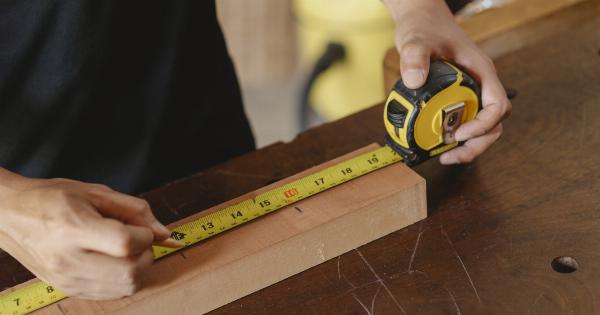Working with scales can be a challenging task, especially when it comes to achieving accurate measurements. There are several scenarios that one should avoid to ensure the reliability and effectiveness of scale usage.
In this article, we will explore four such situations that can lead to inaccurate results and potential problems. By understanding these scenarios, you can steer clear of them and optimize your work with scales.
1. Using an Unreliable Scale
The quality and accuracy of the scale you use significantly impact the measurements you obtain. It is crucial to invest in a reliable scale from a reputable manufacturer.
Using a cheap or poorly calibrated scale can lead to inconsistent readings, resulting in inaccurate measurements. To avoid this scenario, thoroughly research and select a scale known for its precision, durability, and certification.
2. Ignoring Calibration
Calibration is essential to ensure that a scale provides accurate readings. Over time, scales can drift or become less precise, leading to measurement errors. Ignoring the calibration process can compromise the integrity of your results.
Regularly calibrating your scale based on the manufacturer’s guidelines will help maintain accurate measurements. Failing to do so can introduce errors that accumulate over time and impact the reliability of your work.
3. Overloading the Scale
Each scale has a maximum weight capacity, and exceeding this limit can lead to inaccurate results. Overloading a scale places strain on its internal components, potentially causing damage and affecting its accuracy.
Always check the maximum weight capacity of the scale and ensure that the objects being weighed fall within this range. It is advised to leave some margin to account for any unexpected variations in weight.
4. Incorrect Placement of Weights
When using scales for measuring weight, it is essential to place the weights accurately. Placing weights off-centre or unevenly distributed can lead to imbalanced readings.
Ensure that weights are placed at the center of the weighing platform and evenly distributed to obtain accurate measurements. Additionally, avoid touching the weighing platform or scale while taking measurements, as it may introduce errors.
5. Operating in Unsuitable Environmental Conditions
Environmental factors such as temperature, humidity, and air pressure can affect the performance of scales. Extreme temperatures can cause the scale to expand or contract, leading to measurement inaccuracies.
High humidity may cause moisture buildup on the weighing platform, impacting the readings. Similarly, air pressure changes can affect the scale’s sensitivity. It is crucial to operate scales in suitable environmental conditions to ensure accurate measurements.
6. Ignoring Zero Reset
Many scales have a zero-reset or tare function that nullifies any weight existing on the weighing platform before taking measurements. Ignoring the zero-reset step can result in inaccurate readings.
To obtain precise measurements, always reset the scale to zero before placing any objects on the weighing platform. This ensures that the scale only measures the weight of the desired object, eliminating any previous weight readings.
7. Not Considering Surface Stability
Scale accuracy can be compromised if the surface on which it is placed is not stable. An unstable surface can lead to vibrations or movements that affect the readings.
Always place the scale on a flat, level, and stable surface to ensure accurate measurements. Avoid using scales on soft or uneven surfaces that may introduce variability in readings due to shifting or sinking.
8. Neglecting Maintenance and Cleaning
Regular maintenance and cleaning are crucial to ensuring the scale’s accuracy and longevity. Dust, debris, or spills can build up over time, affecting the scale’s functioning and readings.
Neglecting proper cleaning can lead to inconsistent results. Follow the manufacturer’s guidelines for maintenance, including regular cleaning and inspection. This will help maintain the scale’s performance and extend its lifespan.
9. Inadequate Training and User Error
Using scales without proper training or understanding of the functions can lead to user errors and inaccurate readings.
It is crucial to familiarize yourself with the scale’s operation, its features, and any specific instructions provided by the manufacturer. Additionally, always follow the recommended procedures for weighing objects to minimize human errors that can compromise measurement accuracy.
10. Failing to Record and Analyze Data
When working with scales, it is essential to record and analyze data accurately. Failing to do so may lead to confusion, misinterpretation, or loss of valuable information.
Keep detailed records of each measurement, including the date, time, and any relevant parameters. This documentation will enable you to identify trends, track changes, and make informed decisions based on the collected data.
Conclusion
Working with scales requires attention to detail and awareness of potential pitfalls that can compromise measurement accuracy.
By avoiding scenarios such as using unreliable scales, ignoring calibration, overloading the scale, incorrect weight placement, unsuitable environmental conditions, neglecting zero reset, unstable surface, inadequate maintenance, user error, and improper data recording, you can optimize your scale usage and obtain reliable and accurate measurements.





























